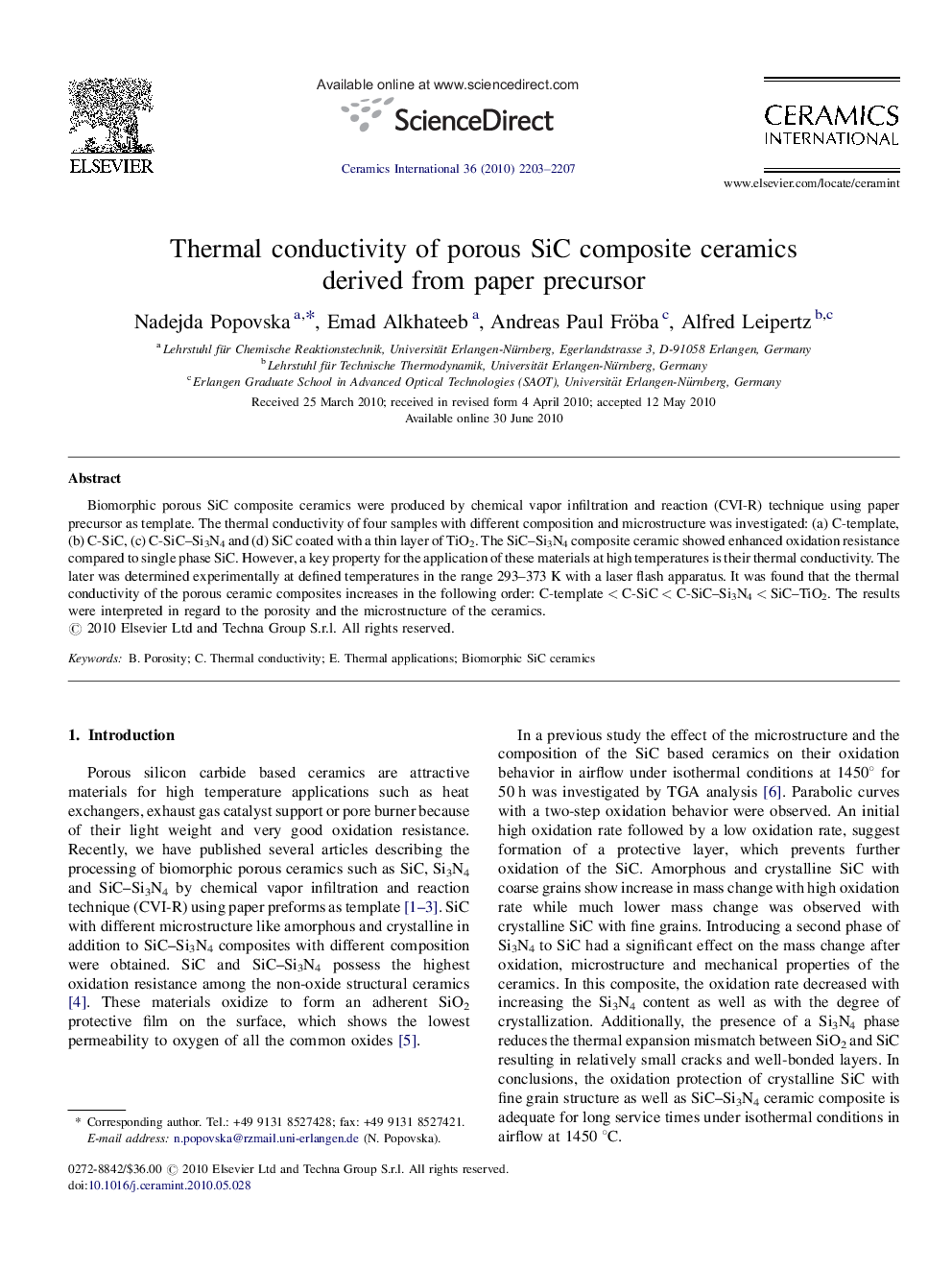| Article ID | Journal | Published Year | Pages | File Type |
|---|---|---|---|---|
| 1464977 | Ceramics International | 2010 | 5 Pages |
Biomorphic porous SiC composite ceramics were produced by chemical vapor infiltration and reaction (CVI-R) technique using paper precursor as template. The thermal conductivity of four samples with different composition and microstructure was investigated: (a) C-template, (b) C-SiC, (c) C-SiC–Si3N4 and (d) SiC coated with a thin layer of TiO2. The SiC–Si3N4 composite ceramic showed enhanced oxidation resistance compared to single phase SiC. However, a key property for the application of these materials at high temperatures is their thermal conductivity. The later was determined experimentally at defined temperatures in the range 293–373 K with a laser flash apparatus. It was found that the thermal conductivity of the porous ceramic composites increases in the following order: C-template < C-SiC < C-SiC–Si3N4 < SiC–TiO2. The results were interpreted in regard to the porosity and the microstructure of the ceramics.
